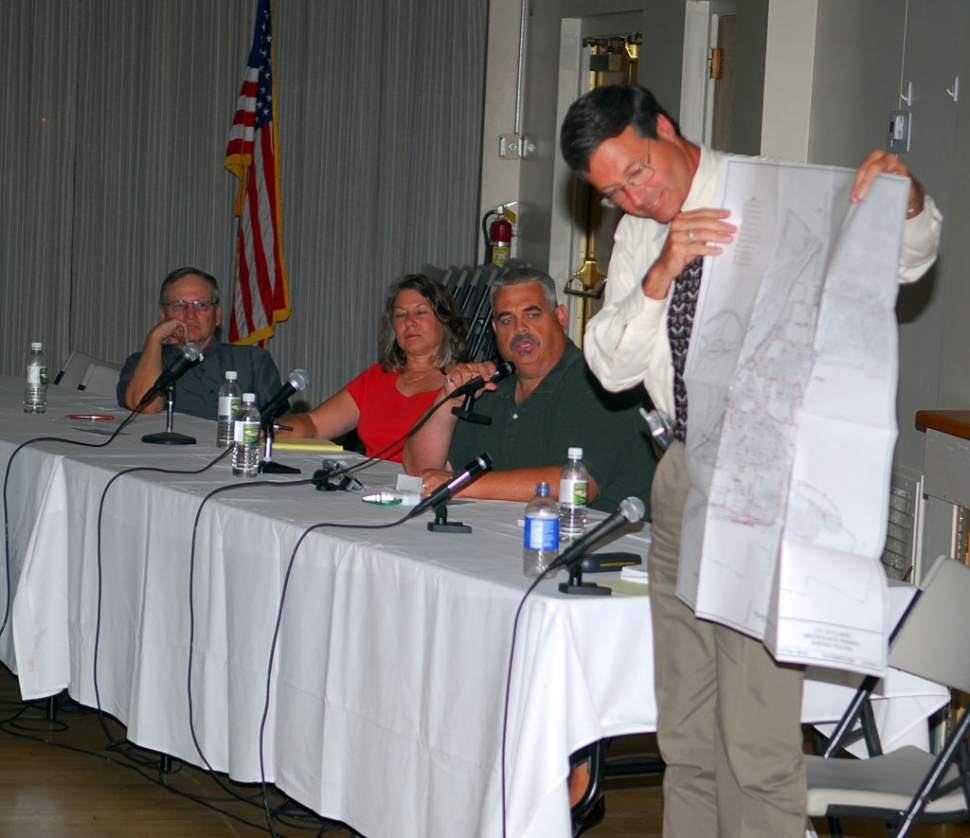
Fillmore Director of Public Works, Bert Rapp, shows a map of the city’s 11 storm drains, which flow into the Santa Clara River. A workshop on the new storm water permit and water softener prohibition was held Monday, July 7. Several hundred residents attended.
A City Workshop was held at the Memorial Building on Monday, June 7, 2008 to discuss three major issues facing Fillmore residents. Approximately 300 citizens and City Council members were in attendance to watch the presentations by Public Works Director, Bert Rapp.
The first presentation was on the EPA’s National Pollutant Discharge Elimination System (NPDES) Permit. The new permit will require, among other things, retrofitting 22 miles of public streets with bio-retention areas and that each existing home and business install onsite storm water treatment. Bio-retention areas are grounds that have been landscaped with plants that can absorb pollutants and naturally convert them into non-hazardous materials. The city installations and maintenance would cost residents $900 per year or $75 per month in addition to their cost to install and maintain their own onsite storm water treatment devices. Existing City storm drains must have treatment installed within two years. Automatic mandatory minimum penalties for violations would be $3,000 per offense. This could escalate into $231,000 per day in fines for the city.
The second presentation was on the chloride levels in city water. The city is exceeding the current 100 milligrams per liter of chloride limit by approximately 37 milligrams per liter. The primary cause of this overage is the approximately 450 Fillmore residents who use Brine Discharging Water Softeners. If all in-home Brine Discharging Water Softeners were eliminated, the city would be in compliance and could avoid charging all residents an estimated $35 dollars per month fee.
The third presentation was on the FEMA Flood Insurance Survey. FEMA is in the process of revising the Fillmore Flood Insurance Rate Map. The preliminary map would require any resident with a federally insured home loan to purchase flood insurance as well as restrict the city’s ability to issue building permits for room additions, new homes, and business buildings. Rapp noted there were several errors in the report and he believes once these errors are corrected, these new requirements will be lifted.
Many public comments were heard by Rapp, city council members, and fellow citizens. One resident, referencing the spirit of the founding fathers of this country, stated, “The presentation, as good as it is, and as accurate as it is, seems to be geared toward: this is what we have to do, we’re asking you, ‘how are we going to do it?’ But I take the attitude is, we’re having to deal with an agency that’s out of control; totally out of control, made up of avid environmentalists. Rather than think, ‘how are we to do it?’ I’d rather have the council and the citizens’ figure out how do we not have to do it.” The sentiment received much applause.
Please find below all three power point presentations that were presented at the meeting.

